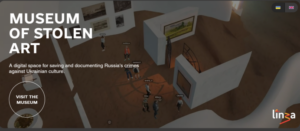According to Cruz (2019), the data generated by the production, appropriation and dissemination of content on digital networks has grown exponentially, making it a vital business in almost every area of human activity. Another fundamental change in the meaning of art has been brought about by the emergence of new media. Digital media represent a new turning point in the relationship between works of art and technical images.
Rosenberg (1982) identifies the process of “artistic de-definition”, describing the indeterminate condition of the artwork as an “anxious object”.
Now that visual content of all kinds is becoming particularly prevalent in social networks, many art organisations are placing increased emphasis on online curatorial projects, such as MOMA,TATE, The Van Gogh Museum and The Museum of Stolen Art etc.
Tate Modern was involved in the digitisation, management and publication of the online archive collection between 2012 and 2017, as well as supporting learning and engagement with the archive. However, as in most cases, the main goal was how to reach a wider audience rather than expanding our knowledge of art, delegating relatively modest tasks to automated analyses (Cruz, 2019)
The Museum of Stolen Art is a virtual museum designed to showcase stolen and still missing works of art, the concept behind which is to allow the viewer to understand the story of stolen art through a virtual reality interface. Users can use VR technology to explore the museum’s “galleries”, view high resolution images of stolen art, and learn about the history and details of each piece, including the circumstances of its theft. Created by designer and developer Ziv Schneider, the Stolen Art Museum aims to use technology to help recover stolen art. By allowing a global audience to see and access these lost pieces, the project aims to maintain public interest and support for efforts to locate and return stolen objects.

Figure 1 The Museum of Stolen Art

Figure 2 The Museum of Stolen Art ‘gallery'
References:
Cruz, M.T. (2019) Art curation and critique in the age of digital humanities. I nternational Journal of Performance Arts and Digital Media. 15 (2), 183–196. doi:10.1080/14794713.2019.1638647.
Museum of stolen art. (2023). museum of stolen art. [online] Available at: https://www.museumofstolen.art/en [Accessed 29 Apr. 2024].
Rosenberg, Harold. (1982) The anxious object / Harold Rosenberg. Phoenix edition. Chicago: University of Chicago Press.

